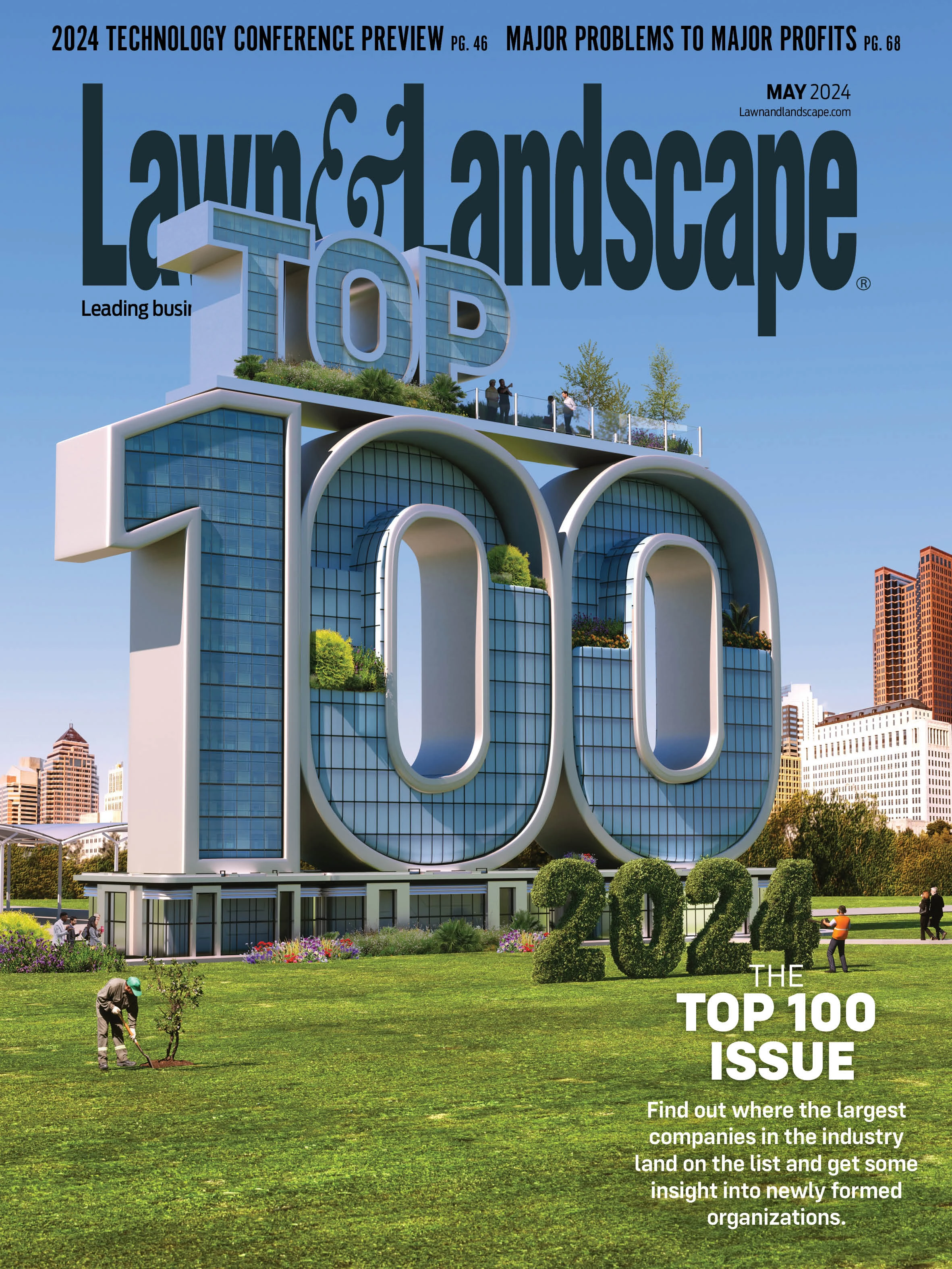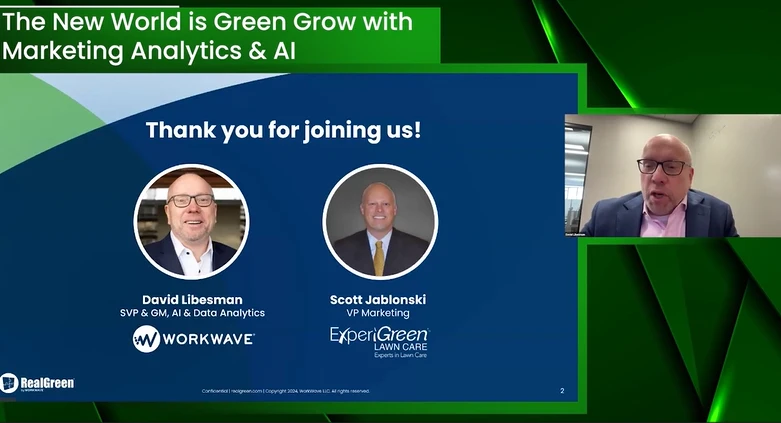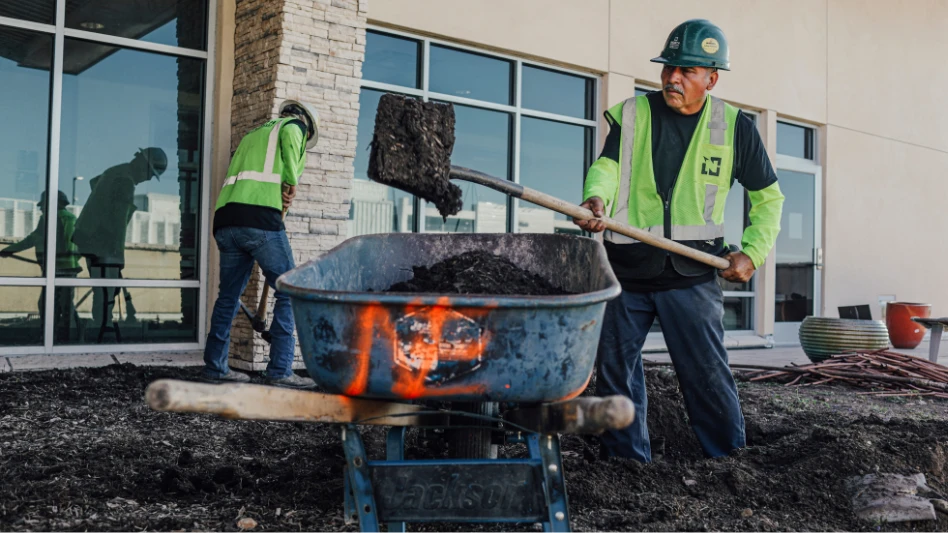

Having been in the business for decades, Richard Lindsay knew his company Mow Cow, based in Fairfax, Virginia, was in trouble a few years ago.
The company was running at a nearly 50% inefficient rate and was on track to have a dismal year profit-wise.
“We were struggling to break through at the current size that we were,” Lindsay recalls. “We just kind of hit a wall. It seemed like no matter what we did, we just couldn’t grow. There was always some fire or something that happened where we couldn’t sell enough or do enough.”
Lindsay says it was a mess of things that contributed to Mow Cow being in such a downward spiral, including changes to the leadership team. Lindsay also got sidetracked with attempting to develop some proprietary software to help boost business.
“Because we were coming off a very tumultuous time, we did have some turnover in our production leadership,” he says. “By the time that person left, our efficiency was 60%. There were some days we were even lower than that.
“The amount of unbillable time we had on top of that…was out of control. There was an immense amount of waste just around the shop and yard, so we went after that,” Lindsay adds.
“...even though I worked around people a very long time, I had a lot to learn about working with people.” — Richard Lindsay, founder, Mow Cow
The first thing Mow Cow needed to do to get things back on track was unite the team.
“Our culture was really high drama,” he says. “There were lots of excuses but not a lot of accountability. We need to look at how we could turn things around.”
Now, through the help of an industry business coach and mentor, along with prioritizing transparency and collaboration, Mow Cow is back in the black. The company, which has about 30 employees, did over $3 million in 2023.
It starts with you
Lindsay says the most monumental piece of advice he got from working with his mentor, Brad Stephenson, was that everything starts at the top. In order to breathe success back into the business, Lindsay had to get comfortable with being uncomfortable and make some difficult personality changes.
“It started with me as the leader of the company. I started really looking at myself and who I was as a leader,” he says.
Lindsay says there were several key questions he had to answer in order to know what aspects of himself he had to work on.
“For me, I started to question and look at what impact I was having as a leader, what I do well and also what I don’t do well,” he says. “What I realized was I’m a very impatient person, and frankly I didn’t give our people a lot of grace… even though I worked around people a very long time, I had a lot to learn about working with people.”
Learning to not talk over people when they’re trying to get their point across, even if it may seem to be taking longer than necessary, was just one of the lessons Lindsay has learned. He also made a conscious effort to do more thinking before speaking himself.
“I discovered that I think out loud,” Lindsay says. That action could lead people to think he’s declaring the next new rule.
“Even though I’m just brainstorming or throwing things out there… it turns out I have a lot of people in the company who like to think before they speak,” he says. “So, one of the things I had to learn is how to give them pause and let them think before they speak.
“I would misunderstand my folks sometimes that while I was delivering my next big idea and they were quietly thinking. I took that as they didn’t agree,” he adds.
Now, meetings are a lot more collaborative at Mow Cow and more voices being heard has translated into better results.

“I really learned that people have good reasons for almost everything they do,” Lindsay says. “If someone is behaving a certain way or doing a certain thing, there is a reason behind it. Sometimes they’re stuck, sometimes they think it’s the right thing to do — so I learned to recognize this and give more grace.”
Along with there being more transparency at the company, Lindsay also started working on an EOS (Entrepreneurial Operating System) and other personality tests to help employees learn how to better work together.
“While we were using EOS, we are also big fans of using the DiSC Index as well,” he says. “By putting our efforts into learning that, we learned some simple things about not only myself but others.”
Becoming an open book
Lindsay says that even before bringing Stephenson in, he wanted to foster more transparency at the company. Doing so has proven to make a difference in operations and therefore profits.
“Over a period of several years, transparency almost automatically starts to create accountability,” Lindsay says. “What started to happen was the people who really thrive in that kind of environment began to grow and offer extra efforts. Those who were used to just fibbing their way through life, or making things up and not delivering, they all started to tap out. It radically changed our whole culture — which then changed how we planned, which then changed how we perform.”
One of the changes that’s been most impactful has been opening up the budget to more employees. It’s something that Lindsay says he used to focus on alone.
“We used to work on budgeting, and everyone had their little, tiny piece of the budget, and frankly I did a lot of the budgeting and financial work and worked closely with our CFO,” he recalls. “We flipped that on its head and now we brought our people in to do 90% of the budgeting. But there still are a few pieces that we’re going to keep private for privacy’s sake in terms of salaries and things like that.”
Lindsay says this has created more of a drive in his employees and creates more accountability as well.
“I’m not a detailed person, and so having folks who thrive on doing that made the quality of everything go up,” he says. “They did a far better job, and because they were involved, the quality of the questions and the quality of the analysis went way up.”
Like with any change, Lindsay admits it took a little time for everyone to adjust to the new normal, but it’s been smooth sailing now for a while.
“At first it felt really odd and awkward, but it was something that really helped us turn things around,” he says. “As people realized we’re having more of these conversations and it has nothing to do with them being disciplined, people start to really spout out and give ideas.
“We began to all be on the same page almost ‘automagically,’” Lindsay adds.
By being more transparent, Lindsay says the problems at Mow Cow became more evident and his team was able to course correct.
“We started off cutting grass, and that morphed into maintenance and then we’ve had some various phases over the years — and have done everything from landscaping to hardscaping. We did an immense amount of bank work for the banks during the Great Recession,” Lindsay says. “At this point now, we’re primarily back to being a maintenance company.
“As we stopped doing construction, and really focused on maintenance, we realized, like a lot of businesses, that labor was our number one cost, so we needed a way to track efficiency,” he adds. “We had been tracking dollars per manhour in the past, but we felt like it wasn’t a great indicator because at certain times in the year, those numbers move all over the place… But when you have folks being efficient, that was a steady indicator of how things were going in the field.”
And by focusing on efficiency, Mow Cow was able to make major improvements over the year.
“I’m not a detailed person, and so having folks who thrive on doing that made the quality of everything go up.” — Richard Lindsay, Founder, Mow Cow
“Our efficiency slowly started to climb… and now we’re shooting at around 78% and we still have room to improve that as well. That was key for us to return to profitability,” Lindsay says.
Overall, Lindsay says that by bringing more people into the inner circle, the company has thrived.
“It was about showing people more of the numbers that drive the company and starting to track some better key indicators on the field workers as well,” he says.
An unusual arrangement
Interestingly enough, the collaboration at Mow Cow doesn’t stop between employees — but with another local landscape company who happen to be the co-habitants of their headquarters.
“We’re in Northern Virginia, where the price of real estate is not only high but finding properly zoned property to have a landscaping company is difficult,” Lindsay says. “So, we share a commercial property with another landscaping company. Our building is in the shape of an ‘L’ and they’re in one part of it and we’re in another.”
Lindsay says that while the arrangement may seem unusual to some, he’s enjoyed sharing the space with another landscaping company. It’s turned out to be quite a symbiotic relationship.
“Our mechanics will borrow some tools, or if their forklift broke, we could borrow theirs,” he says. “We all face the same challenges, and it makes it easy to understand. It’s been more helpful than anything to have them as a neighbor.”
And while the two companies are servicing the same market, Lindsay says he doesn’t consider them the competition.
“There’s so much business, no one company that’s going to put their thumb on you and ruin your ability to compete,” he says. “At Mow Cow, we’re fond of saying our biggest competition is ourselves. If we just work on us, we’ll be just fine.” L&L
Get curated news on YOUR industry.
Enter your email to receive our newsletters.
Explore the May 2024 Issue
Check out more from this issue and find your next story to read.
Latest from Lawn & Landscape
- Ever-changing landscape of SEO
- Fleetio acquires Auto Integrate, raises $450M in Series D funding
- Davey Tree expands in St. Paul, promotes Ostlie to district manager
- Schill Grounds Management taps 3 for senior leadership roles
- HD Hyundai Construction Equipment North America adds to wheeled excavator lineup
- High maintenance
- From Design to Proposal: Estimating and Rendering Support Services
- PERC adds Joel Stutheit as senior manager of business development






